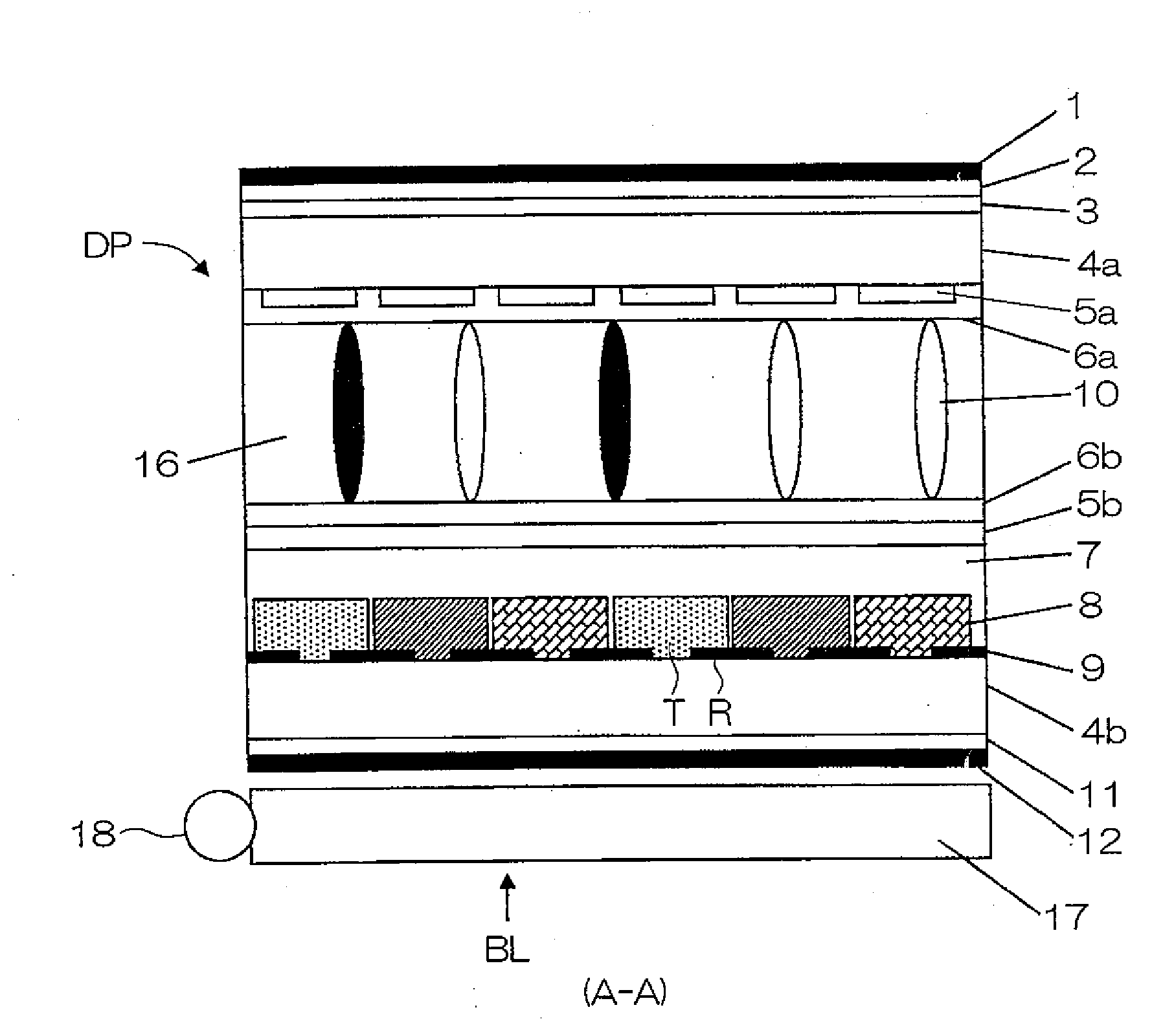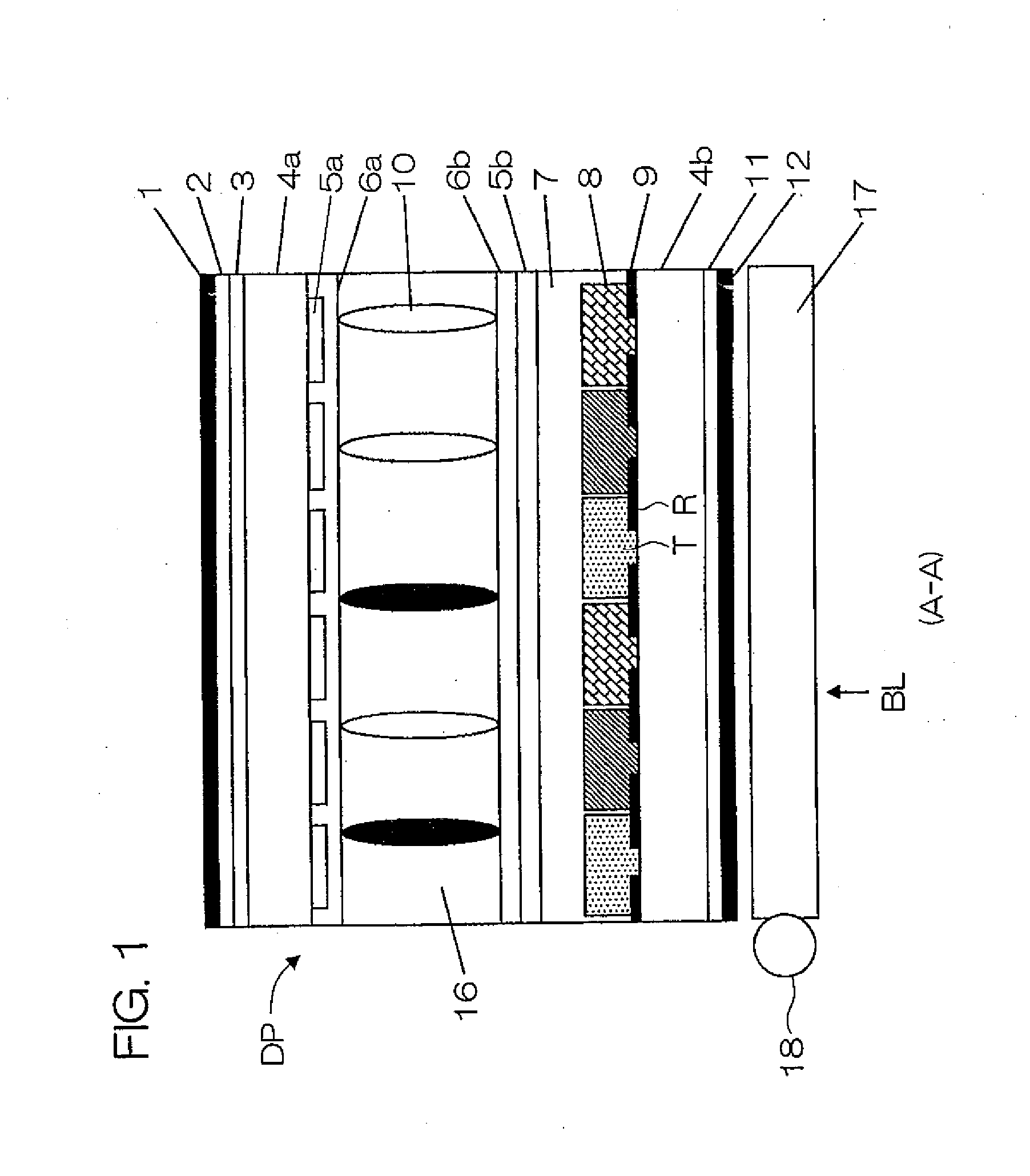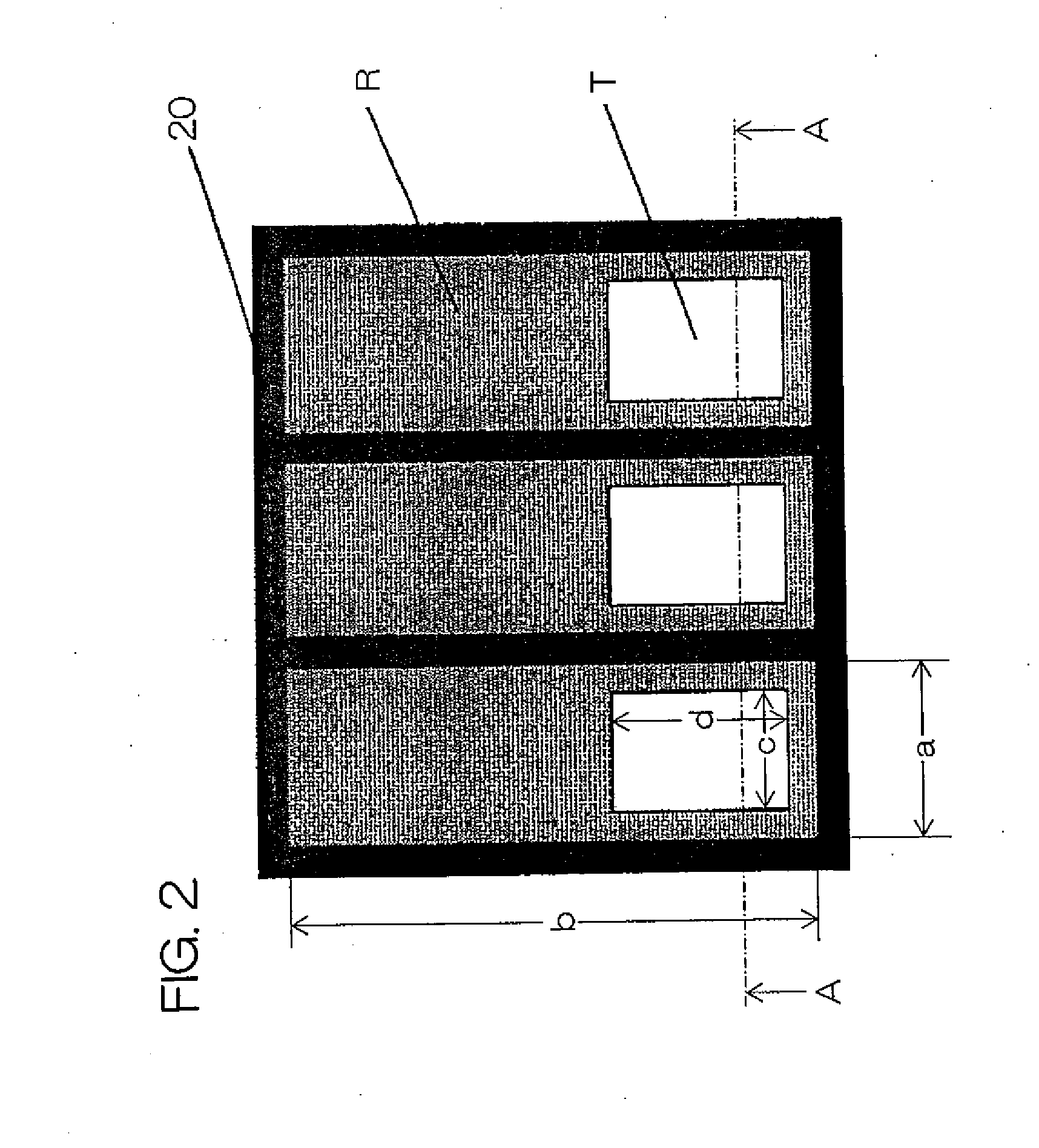Liquid Crystal Display Device
a liquid crystal display and liquid crystal technology, applied in non-linear optics, instruments, optics, etc., can solve the problems of difficult enhancement of both reflectance and transmittance functions, easy white dropout, and light leakage phenomenon, and achieve the effect of suppressing linear alignment defects and stable display
- Summary
- Abstract
- Description
- Claims
- Application Information
AI Technical Summary
Benefits of technology
Problems solved by technology
Method used
Image
Examples
example 1
[0094]A semi-transmissive liquid crystal display device having a light reflective region and a light transmissive region in one pixel and provided with transparent spacers at a density of 200 pieces / mm2 was manufactured. Also, a semi-transmissive liquid crystal display device provided with black spacers at a density of 200 pieces / mm2 was manufactured.
[0095]In addition, a semi-transmissive liquid crystal display device provided with semi-transparent spacers at a density of 200 pieces / mm2 was manufactured.
[0096]More specifically, the radius r was set, for example, to 3 μm for each spacer.
[0097]TABLE 1 and TABLE 2 show evaluation results of roughness caused by white dropouts in the black display and roughness caused by black spots in the white display for the value of πr2 / S when NA−NB=1 was given in Equation (1) above.
TABLE 1πr2 / S0.00100.00170.00230.00340.00470.00550.00670.0079TRANSPARENTROUGHNESS IN WHITE DISPLAY◯◯◯◯◯◯◯◯SPACERSROUGHNESS IN BLACK DISPLAY◯◯◯◯◯◯◯◯BLACKROUGHNESS IN WHITE ...
example 2
[0136]Visual recognition and an alignment defect of liquid crystal caused by pressing were checked in a liquid crystal display device using the spacers shown in FIG. 4.
[0137]The black base material particle 20a and a transparent base material particle as a comparative example were prepared as base material particles of the spacers. Further, for the base material particles of each type, those with and without the hydrophilic group film 20b were prepared.
[0138]Further, those with and without the alkyl group film 20c were prepared. Furthermore, for those having the alkyl group film 20c, the thickness (maximum number of carbons) of the alkyl groups was varied in various manners.
[0139]TABLE 6 shows the result when roughness caused by white dropouts in the black display, roughness caused by black spots in the white display, and an alignment defect of liquid crystal caused by pressing were checked in the liquid crystal device using the spacers.
TABLE 6SPACER BASE MATERIALTRANSPARENTBLACKMAX...
example 3
[0177]TABLE 9 shows the result when the spacer density of the hydrophobic spacers 10b, an alignment defect between spacers, leakage of light from the periphery of spacers, uniformity of the panel GAP (thickness of the liquid crystal layer) were checked.
TABLE 9HYDROPHOBIC TREATMENT SPACERDENSITY (PIECES / mm2)20406080100120140160180200ALIGNMENT DEFECT BETWEEN SPACERS⊚⊚⊚⊚⊚⊚⊚⊚⊚⊚LEAKAGE OF LIGHT FROM PERIPHERY OF SPACER⊚⊚⊚⊚⊚◯◯◯ΔXPANEL GAP UNIFORMITYXXXΔΔΔΔ◯◯⊚
[0178]An alignment defect between the hydrophobic spacers 10b is satisfactory when the hydrophobic spacer density is in a range from 20 to 200 pieces / mm2. This is because no alignment restraining force on liquid crystal molecules is exerted on the spacer surface, and no alignment defect occurs between the spacers where spacers are close to each other.
[0179]Leakage of light from the periphery of spacers is satisfactory when the hydrophobic spacer density is in a range from 20 to 100 pieces / mm2; however, it deteriorates as the density o...
PUM
| Property | Measurement | Unit |
|---|---|---|
| width | aaaaa | aaaaa |
| width | aaaaa | aaaaa |
| dimension | aaaaa | aaaaa |
Abstract
Description
Claims
Application Information
 Login to View More
Login to View More - R&D
- Intellectual Property
- Life Sciences
- Materials
- Tech Scout
- Unparalleled Data Quality
- Higher Quality Content
- 60% Fewer Hallucinations
Browse by: Latest US Patents, China's latest patents, Technical Efficacy Thesaurus, Application Domain, Technology Topic, Popular Technical Reports.
© 2025 PatSnap. All rights reserved.Legal|Privacy policy|Modern Slavery Act Transparency Statement|Sitemap|About US| Contact US: help@patsnap.com



